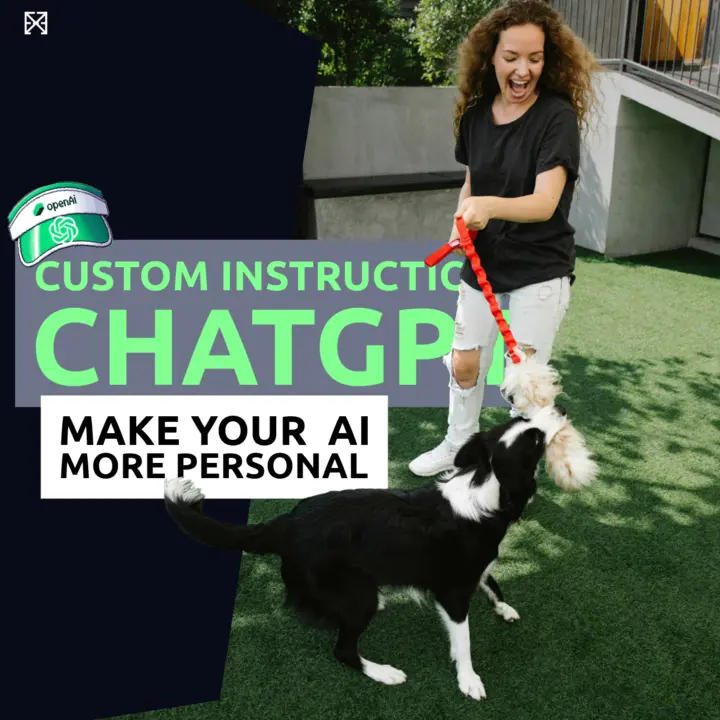Effective prompt engineering requires an understanding of the AI model’s capabilities, the context of the task, and the needs of the user. A good prompt is clear, specific, appropriately detailed, and structured in a way that guides the AI to provide a relevant and insightful response.
Prompt Engineering
Prompt engineering has proven a crucial aspect of interacting with language models like GPT (Generative Pre-trained Transformer in getting the results aka output and the quality that you expect.
A prompt is an instruction.
The “engineering” involves crafting inputs, or "prompts," in a way that effectively guides the model to produce the desired output.
This technique of finessing is particularly relevant when interacting with generative AI and its various applications that typically range from creative writing assistance to technical problem-solving.
The concept is analogous to asking a question in just the right way to elicit the most informative response from a human expert.
Prompt engineering is a process and skillset that revolves around crafting effective prompts or instructions to elicit desired responses from language models like GPT
Background Context: Understanding Language Models
A basic understanding of how language models like GPT work is helpful to make prompt engineering work for you.
GPT and similar models are trained on vast datasets of text, learning patterns of language and information contained within that text. They generate responses based on the input prompt they receive, drawing upon the patterns and knowledge they've assimilated during training. The quality and nature of the response largely depend on how the prompt is structured.
A Well-designed Prompt is Important
Since AI models follow the instructions given in the prompt, the clarity, specificity, and structure of the prompt significantly influence the output.
A well-designed prompt can lead to highly accurate, relevant, and insightful responses, whereas a vague or poorly structured prompt might result in irrelevant or suboptimal answers.
The effectiveness of a prompt also depends on who is using the AI and for what purpose. A prompt that works well for a data scientist might not be as effective for a creative writer, for example. Meaning the user of the prompt and its application context matters.
Prompt Engineering: What Makes a Good Prompt?
We’ve written an entire article that provides you with actionable advice on how to write a good ChatGPT prompt clearly laid out for you.
Also, if you want to let ChatGPT generate a prompt based on these guidelines you should try our ChatGPT prompt to generate ChatGPT prompts.
Examples and Nuances to Get Better Prompts
The effectiveness of a prompt in eliciting the desired response from a language model depends on its clarity, specificity, context, structure, and the careful use of language.
The “art” of prompt engineering lies in understanding and skillfully manipulating these elements to guide the model's responses effectively.
- Technical vs. Layman's Terms: The choice of language in the prompt dictates the complexity of the response. A prompt asking about the "mechanisms of photosynthesis" will likely yield a more technical response than one asking "How do plants make their food?"
- Open-Ended vs. Closed Questions: Open-ended prompts (like "What are the implications of quantum computing?") encourage expansive, exploratory responses. In contrast, closed prompts (like "Is quantum computing faster than traditional computing?") lead to more direct, concise answers.
- For Creative Writing: A good prompt might be, "Write a short story in the style of Hemingway about a lost astronaut, focusing on internal monologue and minimalistic dialogue."
- For Data Analysis: A more technical prompt could be, "Analyze the provided dataset to identify trends in customer purchasing behavior over the last year, using statistical methods like regression analysis, and summarize the key findings."
You can increase your results by even more specifically tailoring your prompts.
Fine tuning is another way to get to better, more specific results.
When you cannot train your own AI you might appreciate the following chapter where we look at prompt engineering in professional contexts where precision is especially crucial and relevance of information are paramount.
“Finetuning” and Tailoring Prompts
Language models can be finetuned to certain application areas. Meaning on top of the Large Language Model (LLM) you can have your own trained AI
Without having to train your own language model you might want to try tailoring your prompts.
In prompt engineering, tailoring prompts to specific application areas, such as marketing and sales, can significantly enhance the effectiveness and relevance of the responses generated by a language model.
Prompting to Specific Application Areas
Our assumptions why prompting to specific application areas are drawn from
- Customization Enhances Effectiveness: Tailoring prompts according to the domain (like marketing or sales) or the specific task at hand leads to more effective and relevant responses. This is because language models respond based on the cues they receive from the prompt, and a well-crafted prompt guides them more accurately.
- Domain-Specific Language and Context Matter: Using domain-specific language and including relevant context in the prompts can significantly improve the quality and applicability of the responses. This is especially important in professional fields where specialized knowledge and terminology are prevalent.
- Different Goals Require Different Approaches: Understanding that different domains and tasks have unique goals, jargon, and requirements is crucial. This knowledge allows for the creation of prompts that are aligned with these specific goals, leading to more targeted and useful responses.
The prompt tailoring to specific application areas can be approached from various perspectives, including divisional (focused on specific domains like marketing or sales), functional (centered around particular tasks or functions), and task-specific (geared towards specific activities within a domain). Each approach has its merits, and the choice often depends on the specific objectives and context of the user.
Divisional Approach
Prompting from a divisional approach e.g., marketing vs. sales might insfora be useful because each division has different goals and metrics.
Marketing and sales, while interconnected, have different goals and success metrics. Marketing prompts might seek to explore strategies for market penetration or brand loyalty, whereas sales prompts could be more about conversion rates and customer relationship management.
This results in focusing on domain-specific language and concepts. As discussed above this specificity and context is something we are looking for in a good prompt.
Different domains have their unique jargon, concepts, and focus areas. A marketing prompt might include terms like 'brand awareness', 'customer persona', or 'digital marketing strategy', while a sales prompt might focus on 'lead generation', 'sales funnel', or 'closing techniques'.
Functional Approach
Prompt engineering centered on tasks or functions provides flexibility across domains. A functional approach applies similar tasks across different domains. For example, data analysis might be relevant in both marketing and sales, but the specific application and context of the analysis would differ.
Task-oriented prompts focus on the specific tasks or functions within a domain, providing structure.
For instance, in marketing, this could involve prompts related to content creation, SEO optimization, or social media strategy. In sales, it might involve negotiation tactics, customer outreach methods, or sales forecasting.
Activity-level Approach
On an activity level we are focused on specific activities in certain tasks and styles of output.
These prompts can be tailored to the expertise level needed, whether for a novice or an expert, and can dive deep into complex topics within a specific task.
By focusing on very specific activities, task-specific prompts can yield highly relevant and detailed responses. For example, a prompt asking for "steps to optimize a Google Ads campaign for better ROI" is a highly targeted response.
What Is the Best Way?
The "best" approach depends on
- the Objective of the Prompt
- A User's Background and Expertise
- The Nature of the Task or Query
If the goal is to obtain information or strategies specific to a domain, a divisional approach might be more suitable. For task-oriented queries or seeking expertise in a particular function, functional or task-specific approaches are preferable.
The expertise level of the user also dictates the approach. A generalist might benefit more from divisional prompts, while a specialist might need task-specific prompts.
Some tasks or queries are inherently more suited to one approach over the others. For instance, strategic planning might require a divisional approach, while solving a specific problem might need a task-specific prompt.
The choice between a divisional, functional, or task-specific approach in prompt engineering for areas like marketing and sales depends on the specific goals, context, and expertise level of the user. Each approach has its strengths and is best suited for different types of queries and objectives.
What are common mistakes in prompt engineering?
While prompt engineering is a powerful tool for eliciting precise and useful responses from AI models, certain common mistakes can hinder its effectiveness.
The article Common Mistakes in Prompt Engineering addresses key errors often encountered in prompt engineering, providing practical advice on how to avoid them.
Being aware of these pitfalls is crucial for anyone looking to master prompt crafting.
Why is Prompt Engineering Important to my business?
- Increased Efficiency and Productivity: Tailored prompts lead to more precise answers, reducing the time spent on follow-up queries or sifting through irrelevant information.
- Better Decision-Making: In areas like marketing and sales, decisions are often data-driven and require accurate information. Effective prompt engineering ensures that the information provided by AI systems is relevant and accurate, leading to better-informed decisions.
- Enhanced Understanding: Well-crafted prompts can provide more in-depth, nuanced responses.
- Competitive Advantage: In a business context, the ability to quickly and accurately extract insights and information is a significant competitive advantage. Effective prompt engineering can be a key component in harnessing AI capabilities to stay ahead in the market.
- Cost-Effective: Relying on AI for accurate and quick information retrieval or problem-solving can be cost-effective compared to traditional methods, especially when prompts are engineered effectively to maximize the utility of the AI's responses.
Prompt engineering is not just a technical skill but a strategic one, enabling users to harness the full potential of AI language models in a way that is aligned with their specific goals and needs.
Whether for professional development, business strategy, or efficient information retrieval, the ability to craft effective prompts is a valuable skill in the increasingly AI-integrated world.













